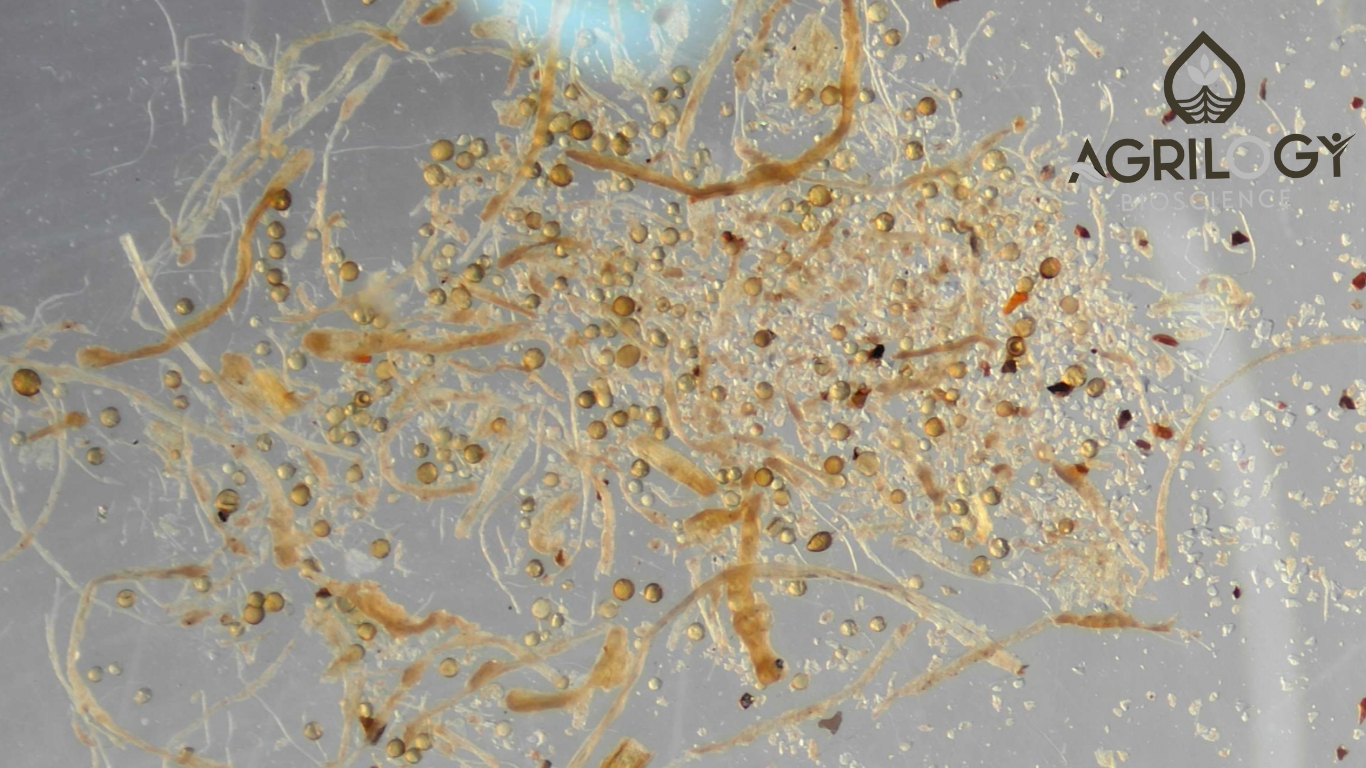
- Home
- Why Spore Size Matters in Mycorrhizal Fungi ?

Aditi Bijalwan
Co-founder at Agrilogy Bioscience Private Limited
The hidden trade-off between survival, dispersal, and ecosystem success
The Basics: What Are We Talking About?
Endomycorrhiza (AMF): These are fungi from the phylum Glomeromycota that live in partnership with the roots of over 80% of land plants.
The Spore: For AMF, spores are the primary survival and dispersal unit. Each spore is a tiny capsule packed with hundreds to thousands of nuclei, lipid reserves, and the potential to start life again by colonizing a p
lant root when conditions allow.
Why Spore Size Matters
Spore size is not random. It’s an evolutionary trade-off between two competing needs:
- Small spores → High numbers, easy dispersal.
- Large spores → Better survival, more reserves.
This balance explains why AMF are so successful in almost every terrestrial ecosystem.
Genetic Blueprint: Different Families, Different Sizes
Each AMF species has a “signature” spore size.
- Acaulospora and Entrophospora → Small to medium spores (40–200 µm).
- Gigaspora and Scutellospora → Giants (300–800 µm, sometimes visible to the naked eye).
The Survival vs. Dispersal Trade-Off
- Large spores
- Pros: Store more food, survive drought or poor soils, grow long germ tubes.
- Cons: Costly to make, fewer in number, poor wind dispersal.
- Small spores
- Pros: Cheap to produce, countless in number, move easily with water, wind, or animals.
- Cons: Less energy stored, short shelf life, need to land very close to a host plant root.
Environmental Drivers
- Nutrient-poor soils: Favor larger spores for survival.
- Disturbed ecosystems (e.g., farms): Favor smaller spores for rapid recolonization.
- Host plant health: Stressed plants may force fungi to produce fewer/smaller spores.
Ecological and Practical Implications
Soil Health Indicator
Shifts in spore size reflect ecosystem status.
- Dominance of small spores → disturbance, intensification, or degradation.
- Large spores → stability, maturity, and resilience.
Agricultural Inoculants
- Small spores: Best for commercial use. They can be mass-produced, flow in irrigation systems, and mix with seed coatings.
- Large spores: Less equipment-friendly but ideal for forestry, orchards, or revegetation projects needing long-term establishment.
Dispersal Across Landscapes
- Small spores: Travel vast distances via wind and water (even between continents).
- Large spores: Spread locally, often hitchhiking with earthworms, rodents, or other soil movers.
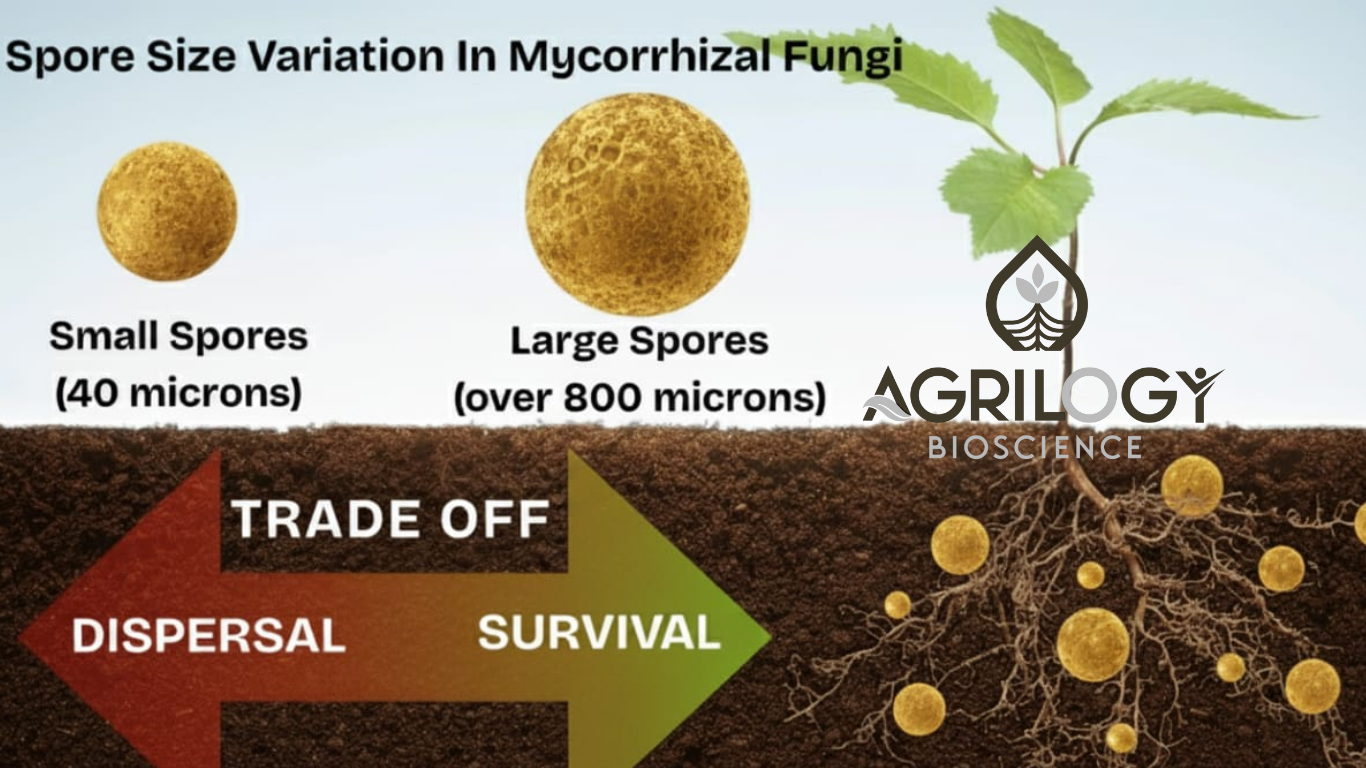
Fascinating Twist: Spore Clusters
Some AMF species combine both strategies by producing spore clusters (sporocarps).
- Example: Glomus species form clusters of many small/medium spores.
- Advantage: Protection plus the ability to disperse multiple spores at once via animals or disturbance.
The Bigger Picture: r- vs K-Strategies
In ecological terms:
- Large spores = K-selected strategy → “quality over quantity.”
- Small spores = r-selected strategy → “quantity over quality.”
This simple size difference drives the resilience and spread of one of Earth’s most important plant-fungal partnerships.
The Bottom Line
Spore size is not just a microscopic detail—it’s a survival strategy. It shapes how fungi spread, endure harsh conditions, and support the plants we rely on for food, forests, and healthy ecosystems.
Comments (0)
No comments yet. Be the first to comment!

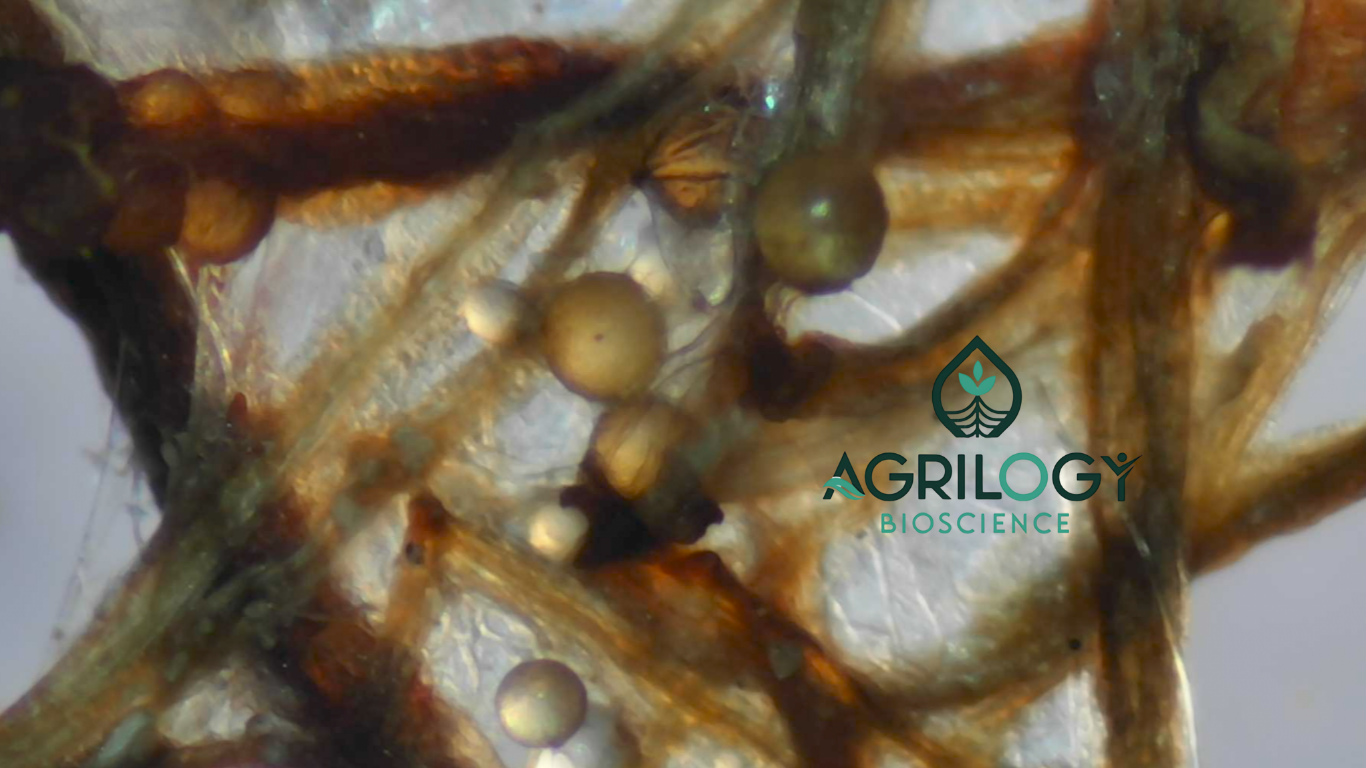
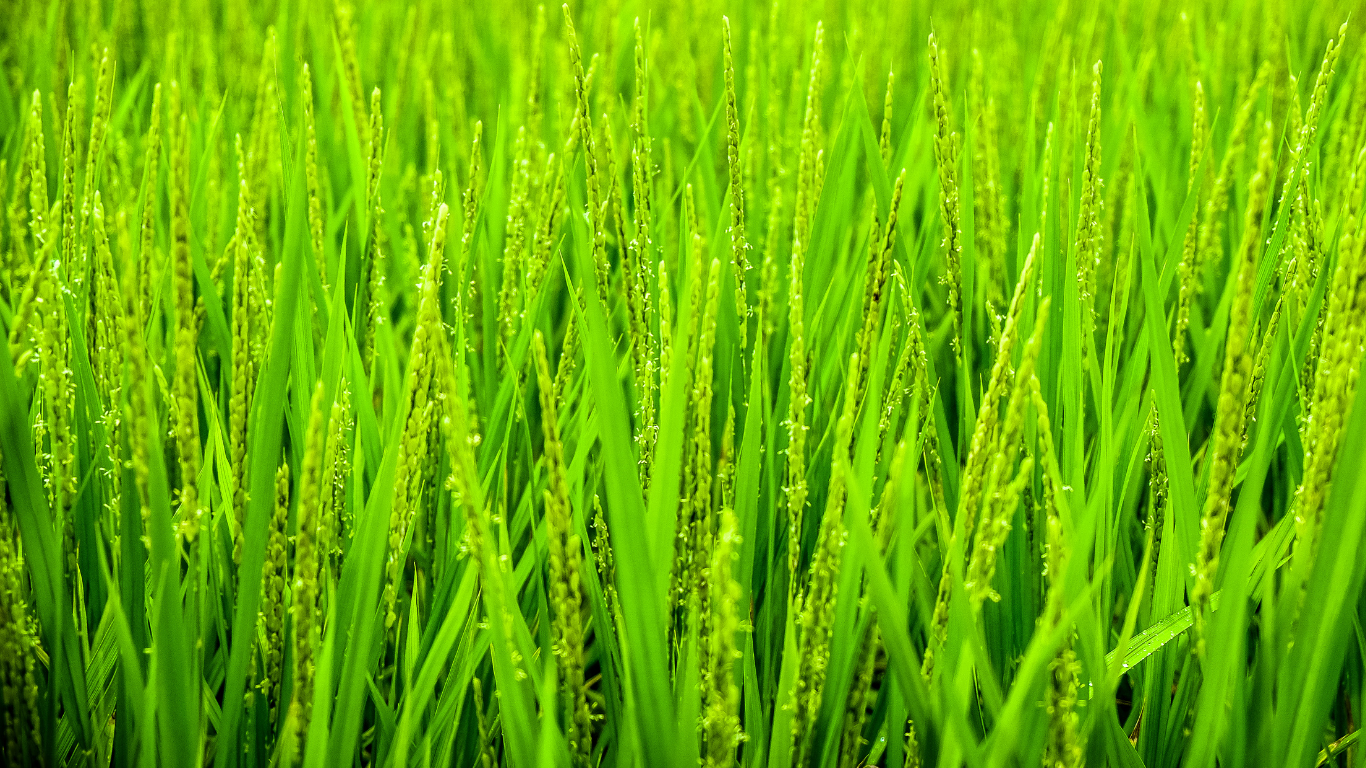
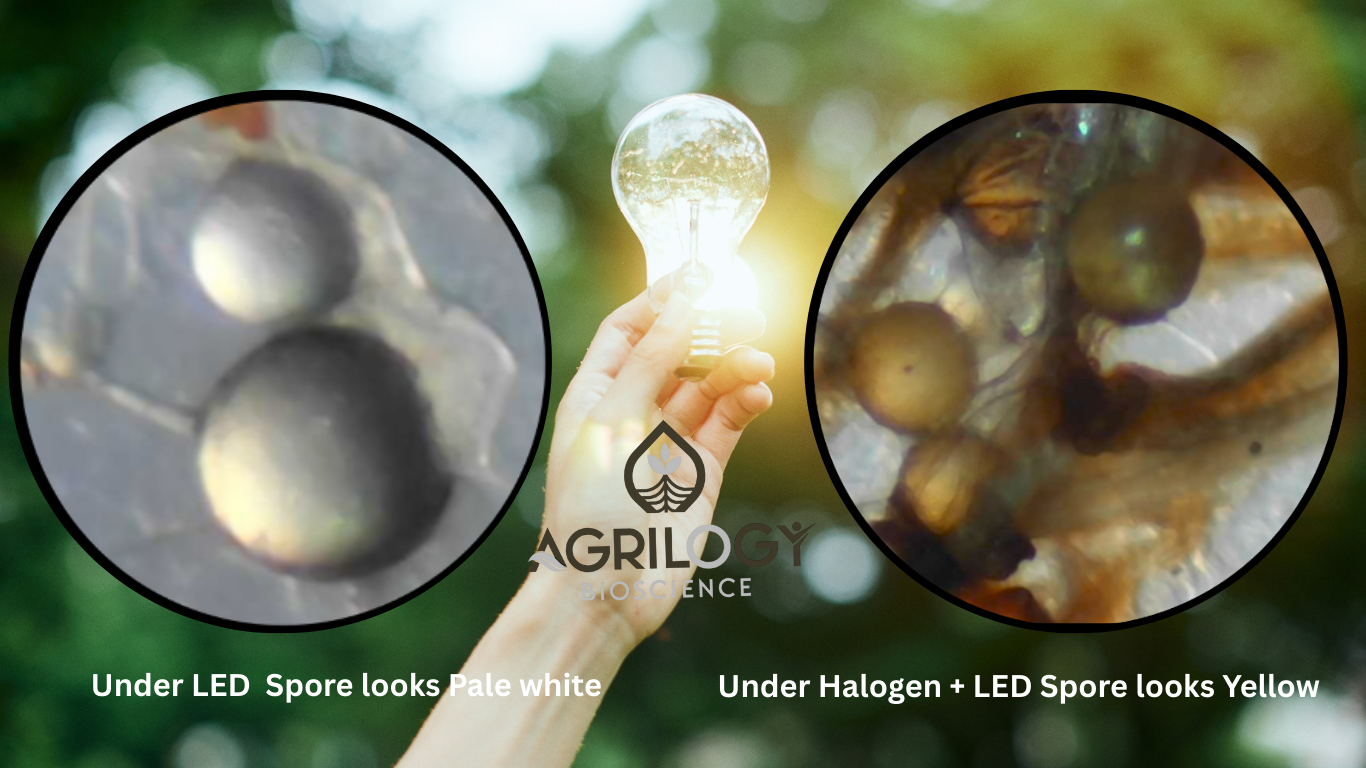
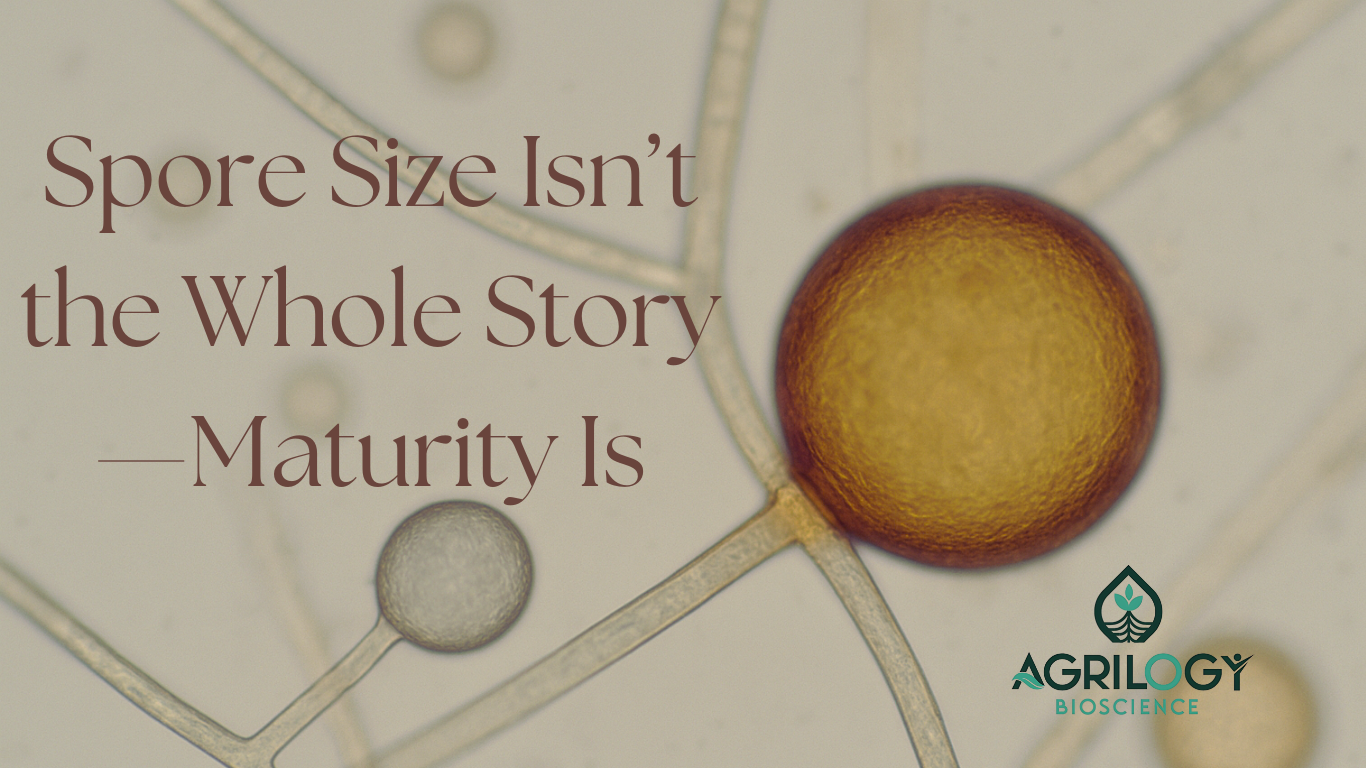
Leave a Comment